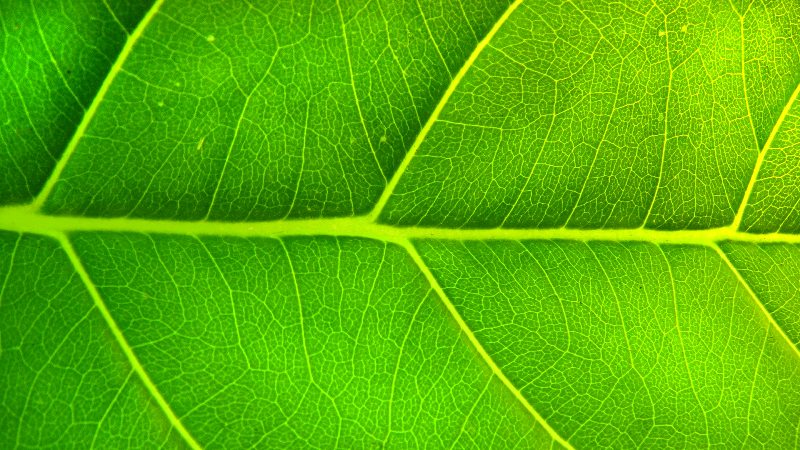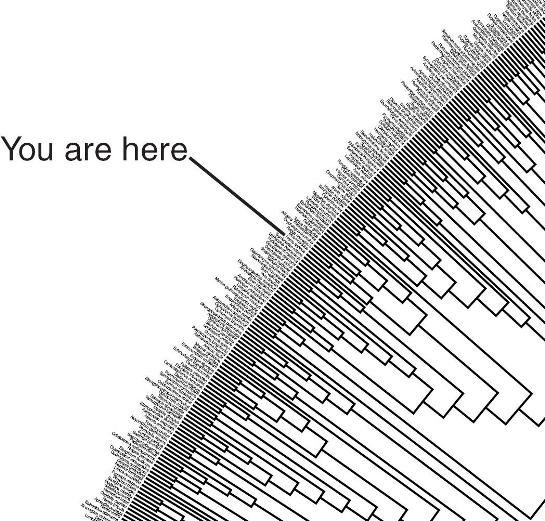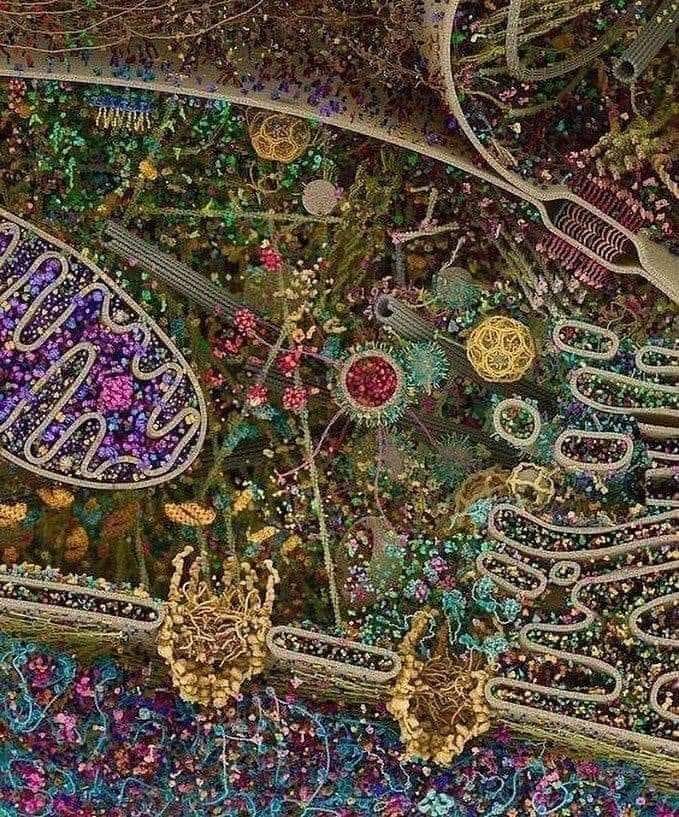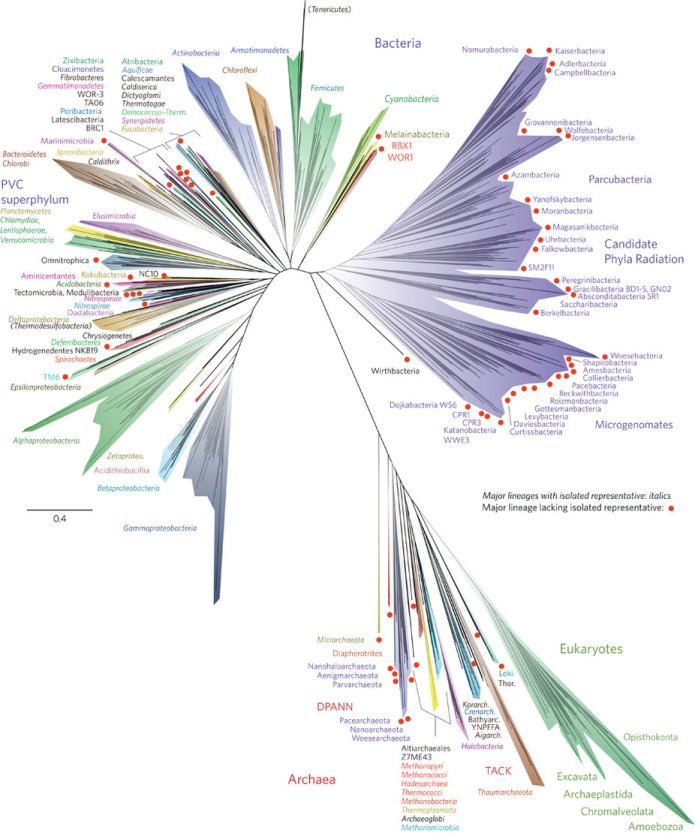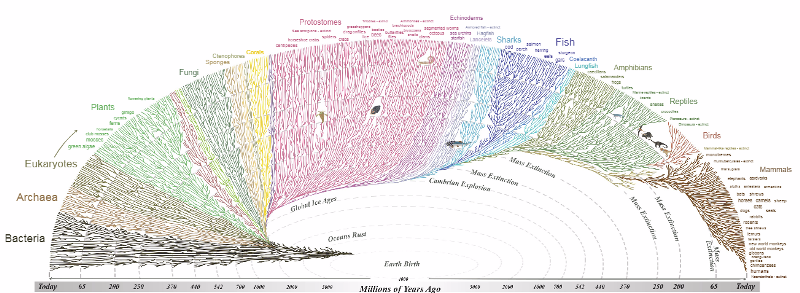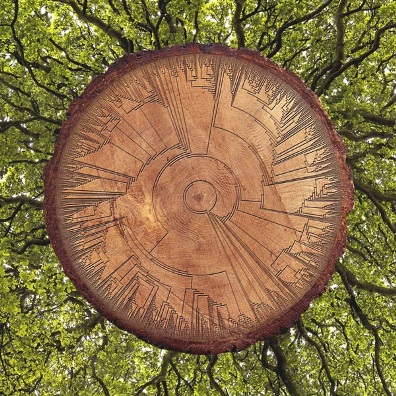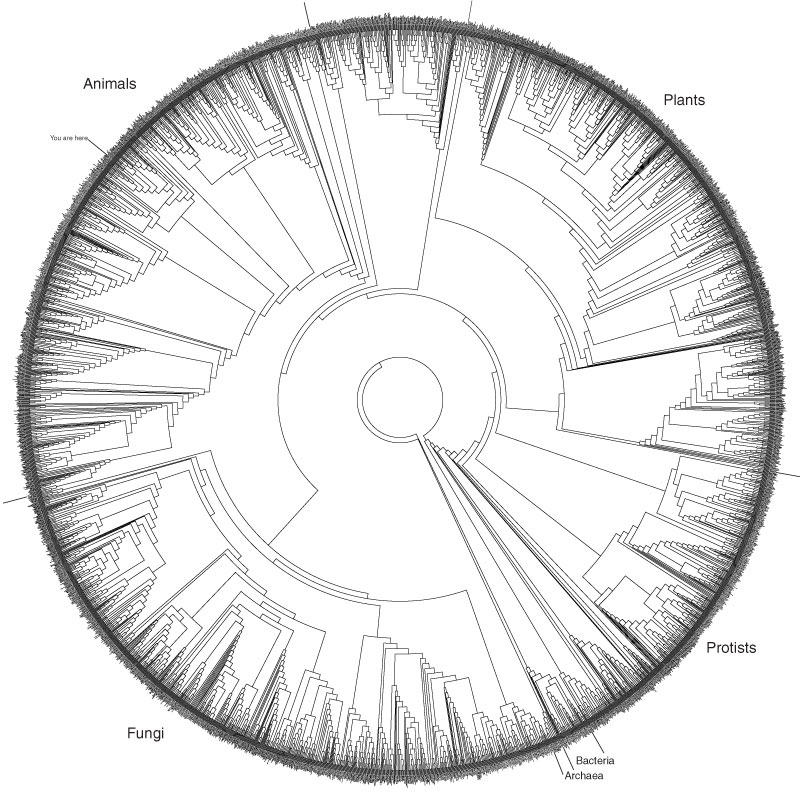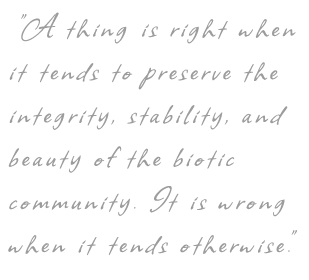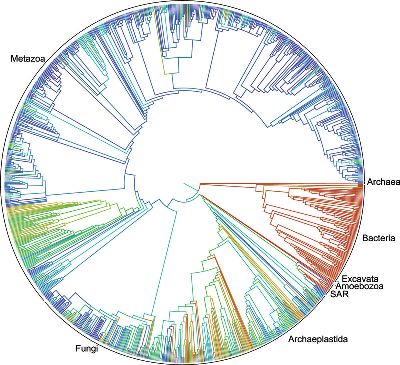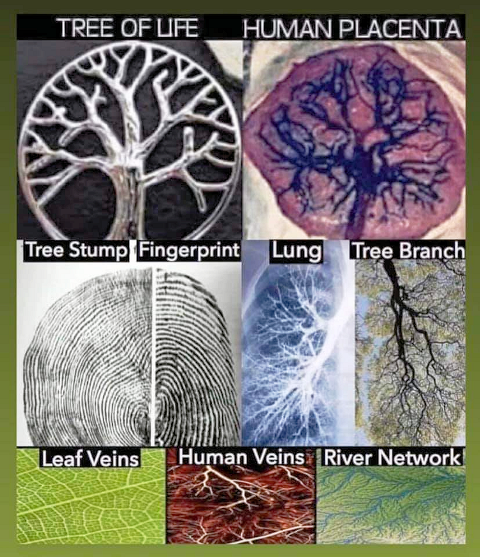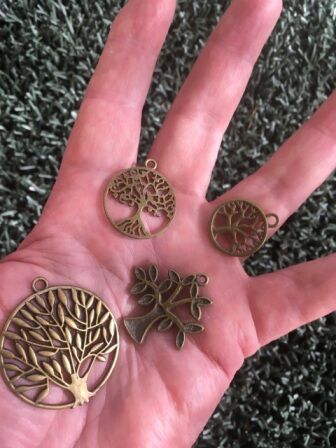Tree of Life: Difference between revisions
Siterunner (talk | contribs) No edit summary |
Siterunner (talk | contribs) No edit summary |
||
| (112 intermediate revisions by the same user not shown) | |||
| Line 1: | Line 1: | ||
'''' | <big><big><big>'''[[It's All Related]]'''</big></big></big> | ||
[[File:Nature Us and Veins of a Green Leaf.jpg]] | |||
http://www.pnas.org/content/early/2015/09/16/1423041112.full.pdf | |||
[[File:Remembering E.O. Wilson and Thomas Lovejoy.jpg]] | |||
''December 27, 2021'' | |||
<big><big>'''''Remembering E.O. Wilson and Thomas Lovejoy'''''</big></big> | |||
''We celebrate today the lives of two great ecologists: E.O. Wilson, who passed away on December 26 at the age of 92, and Tom Lovejoy, who passed away onDecember 25 at the age of 80. Each made extraordinary contributions to the field of bio-diversity and to the greater public dialog about humans and nature...'' | |||
* https://www.garrisoninstitute.org/blog/remembering-e-o-wilson-and-thomas-lovejoy/ | |||
<big>'''Tom and Ed, Pioneering Conservation Biology'''</big> | |||
Thomas Lovejoy and Edward O. Wilson | |||
''The two scientists first met in the mid-nineteen-seventies. At that point, Wilson was in his mid-forties, and teaching biology at Harvard. Lovejoy, a dozen years younger, was working for the World Wildlife Fund. Over lunch, they got to talking about where the W.W.F. should focus its efforts. They agreed that it should be in the tropics, because the tropics are where most species actually live. There wasn’t a good term for what they were trying to preserve, so they tossed one around—“biological diversity”—and put it into circulation. “People just started using it,” Lovejoy recalled, in an interview in 2015. (Later, the phrase would be shortened to “biodiversity.”)'' | |||
* https://www.newyorker.com/news/daily-comment/honoring-the-legacy-of-e-o-wilson-and-tom-lovejoy | |||
························································ | |||
<big><big>'''World Animal Foundation'''</big></big> | |||
* https://worldanimalfoundation.org/advocate/how-many-animals-are-in-the-world/ | |||
'''''Quantifying the Amazing Diversity of Life''''' | |||
''October 2023'' | |||
~ From the Total of 8.7 Million Species, 2.16 Million Are Animal | |||
~ 97% of All Animals Are Invertebrates | |||
~ More Than 62,000 Vertebrate Species Have Been Identified | |||
~ The Estimated Species of Insects Is 10 Quintillion | |||
~ The Described Species of Birds and Reptiles Is 11,188 and 11,733, Respectively | |||
~ About 6,596 Described Species of Mammals Exist in the World | |||
~ The Current Amphibians Database Shows There Are 8,698 Existing Species of Amphibians | |||
~ The Estimated Number of Fish in the World Is 3.5 Trillion | |||
~ 86% and 91% of All the Land and Sea Species Respectively Have Not Been Discovered | |||
<big>'''''Earth BioGenome Project'''''</big> | |||
Working to sequence 1.5+ million genomes | |||
* ''https://www.nature.com/articles/d41586-018-07279-z'' | |||
''The Earth BioGenome Project aims to sequence the genomes of the roughly 1.5 million+ known animal, plant, protozoan and fungal species — collectively known as eukaryotes — worldwide over the next decade. The initiative is estimated to cost US$4.7 billion, although only a small proportion of that money has been committed so far.'' | |||
''The project comprises more than a dozen existing sequencing projects that are focused on, for instance, specific branches of the tree of life — such as birds, insects and plants — or on the biodiversity in a particular country, such as the UK effort, officially called the Darwin Tree of Life Project.'' | |||
''“We don’t need one genome project to rule them all,” says Lewin. Rather, the effort’s raison d’etre, he says, is to ensure that ongoing biodiversity sequencing efforts are standardized.'' | |||
''“Variation is the fount of all genetic knowledge... The more variation you have the better — so why not sequence everything?”'' | |||
:[[File:Tree of Life video.png | link=https://youtu.be/AjvLQJ6PIiU]] | |||
* ''https://youtu.be/AjvLQJ6PIiU'' | |||
* ''https://www.youtube.com/watch?v=Ew-6WuTo1Is'' | |||
:::::[[File:You are here on the cladogenetic tree m.jpg]] | |||
······················································································ | |||
<big><big>GreenPolicy360 'Science Idea of the Day'</big></big> | |||
By Carl Zimmer | |||
* https://carlzimmer.com/what-is-a-species-398/ | |||
<big>What is a species?</big> | |||
''Long before the dawn of science, humans were naming species. To be able to hunt animals and gather plants, people had to know what they were talking about. Taxonomy, the modern science of naming species, emerged in the 1600s and came into its own in the next century, thanks largely to the work of Swedish naturalist Carl Linnaeus. Linnaeus invented a system to sort living things into groups, inside which were smaller groups. Every member of a particular group shared certain key traits. Humans belonged to the mammal class, and within that class the primate order, and within that order the genus Homo, and within that genus the species Homo sapiens. Linnaeus declared that each species had existed since creation. “There are as many species as the Infinite Being produced diverse forms in the beginning,” he wrote.'' | |||
''Linnaeus’s new order made the work of taxonomists much easier, but trying to draw the lines between species often proved frustrating. Two species of mice might interbreed where their ranges overlapped, raising the question of what name to give to the hybrids. Within a species there was confusion as well. The willow ptarmigans in Ireland, for example, have a slightly different plumage than the willow ptarmigans in Finland, which differ in turn from the ones in Norway. Naturalists could not agree about whether they belonged to different ptarmigan species or were just varieties–subsets, in other words–of a single species.'' | |||
''Charles Darwin, for one, was amused by these struggles. “It is really laughable to see what different ideas are prominent in various naturalists’ minds, when they speak of ‘species,’” he wrote in 1856. “It all comes, I believe, from trying to define the indefinable.” Species, Darwin argued, were not fixed since creation. They had evolved. Each group of organisms that we call a species starts out as a variety of an older species. Over time natural selection transforms them as they adapt to their environment. Meanwhile other varieties become extinct. An old variety ends up markedly different from all other organism–what we see as a species in its own right.'' | |||
''“I look at the term ‘species’ as one arbitrarily given, for the sake of convenience, to a set of individuals closely resembling each other,” Darwin declared...'' | |||
''Like the taxonomists before him, Darwin could study species only with the naked eye, observing the color of a bird’s feathers or counting the plates on a barnacle. It would not be until the early 20th century that scientists could start to examine the genetic differences among species. Their research led to a new way of thinking. What made a species a species were the barriers to reproducing with other species. Genes could flow among its members as they mated, but these individuals usually remained within the species, thanks to reproductive barriers. Species might spawn at different times of the year, they might find courtship songs of other species unattractive, or their DNA might simply be incompatible.'' | |||
''The best understood way for these barriers to evolve is through isolation. Some members of an existing specie–a population–have to become unable to mate with the rest of their species. A glacier could thrust across their range, for example. The isolated population evolves new genes, and some of those new genes may make interbreeding difficult or impossible. Over hundreds of thousands of years so many barriers evolve that the isolated population becomes a distinct species.'' | |||
''This understanding of how species evolve led to a new concept of what it meant to be a species. Ernst Mayr, a German ornithologist, boldly declared that species were not convenient labels but real entities, like mountains or people. In 1942 he defined a species as a gene pool, calling it a set of populations that can reproduce with one another and that are unable to mate successfully with other populations.'' | |||
''The biological species concept, as it is now called, became the textbook standard...'' | |||
''Related organisms share traits because they share the same ancestry. Humans, giraffes and bats all descend from ancient mammals, and as a result they all have hair and milk. Within mammals, humans share a closer common ancestry with other primates. From the common primate ancestor, primates inherited other traits, such as forward-facing eyes. You can zoom in on smaller and smaller sets of organisms this way. Eventually, though, the zooming in comes to a stop. There are organisms that form groups that can no longer be split. These, according to the phylogenetic species concept, are species. In a sense, this concept takes Linnaeus’s original system and updates it in light of evolution. The phylogenetic species concept has been embraced by researchers who need to identify species rather than just contemplate them. Recognizing a species is a matter of finding a group of organisms that shares certain clear-cut traits. Scientists do not have to depend on slippery qualities like reproductive isolation.'' | |||
'''''Tiny Species / Microorganisms''''' | |||
''Most of the work that has been done on the species concept in recent years has been directed at animals and plants. That bias is the result of history: animals and plants were the only things that Linnaeus and other early taxonomists could study. But today scientists know that the vast majority of genetic diversity lies in the invisible world of microbes. And microbes have long posed the biggest puzzle of all when it comes to the nature of species.'' | |||
''When microbiologists began naming species in the 1800s, they could not inspect feathers or flowers like zoologists and botanists can. Microorganisms–especially bacteria and archaea–generally look a lot like one another. Some are rod-shaped, for example, and some are tiny spheres. To distinguish two rod-shaped bacteria from each other, microbiologists would run experiments on their metabolism. One kind of microbe might be able to feed on, say, lactose, whereas the other could not. From clues of this sort, microbiologists described such species as Escherichia coli or Vibrio cholerae. Underlying their work, however, was no clear concept of what it meant for microbes to belong to a species. And when Mayr came up with his biological species concept, it seemed to exclude many microbes. After all, bacteria are not made up of males and females that have to reproduce sexually like animals. They can just split in two.'' | |||
''The confusion got worse when scientists began to analyze the DNA of microbes. They tried to figure out how different the DNA of two microbial species was, selecting small fragments for comparison. To their surprise, the differences could be huge. Two species of bacteria placed in the same genus based on their metabolism might be more different than humans are from all other primates. And the bacteria within a species could make their living in radically different ways. Some strains of E. coli live harmlessly in our gut, for example, whereas others can cause fatal diseases. “The genetic variation within a species is so enormous that the term species does not really have the same meaning for bacteria and archaea” as it does for multicellular plants or animals, says Jonathan Eisen of the University of California, Davis.'' | |||
: [[File:Tiny Little Ones... Inner Life of a Cell.jpg]] | |||
''Microbes are not some minor exception to the rule that can be ignored. As investigators have surveyed the microbial world, they have discovered that the diversity of all animals is puny in comparison. “It’s always struck me as rather odd that if Mayr is right, then 90 percent of the tree of life doesn’t come in species,” says John Wilkins, a philosopher of science at the University of Queensland in Australia. “That’s got to give you some pause for thought.”'' | |||
Excerpts from Scientific American 2008 | |||
=='''''Open source 'Tree of Life' including all species known to humans to date'''''== | |||
''U.S. National Science Foundation'' / ''As of September 2015'' | |||
'''''First draft of ‘Tree of Life’ data diagrams include 2.3 million species''''' | |||
''Proceedings of the National Academy of Sciences of the United States'' | |||
* http://www.eurekalert.org/pub_releases/2015-09/uom-ol091815.php | |||
* http://www.pnas.org/content/early/2015/09/16/1423041112 | |||
''Authors of the 2015 PNAS Study'' | |||
''Scientists have used gene sequences and morphological data to construct tens of thousands of evolutionary trees ([https://en.wikipedia.org/wiki/Tree_of_life_(biology) phylogenetic schematics]) that describe the evolutionary history of animals, plants, and microbes. '''This study is the first, to our knowledge, to apply an efficient and automated process for assembling published trees into a complete tree of life. This tree and the underlying data are available to browse and download from the Internet, facilitating subsequent analyses that require evolutionary trees. The tree can be easily updated with newly published data.''' Our analysis of coverage not only reveals gaps in sampling and naming biodiversity but also further demonstrates that most published phylogenies are not available in digital formats that can be summarized into a tree of life.'' | |||
* http://www.pnas.org/content/early/2015/09/16/1423041112.full.pdf | |||
''The realization that all organisms on Earth are related by common descent was one of the most profound insights in scientific history. The goal of reconstructing the tree of life is one of the most daunting challenges in biology. The scope of the problem is immense... most species have yet to be described. Despite decades of effort and thousands of phylogenetic studies on diverse clades, we lack a comprehensive tree of life, or even a summary of our current knowledge. One reason for this shortcoming is lack of data. GenBank contains DNA sequences for 411,000 species, only 22% of estimated named species. Although some gene regions have been widely sequenced across some lineages, they are insufficient for resolving relationships across the entire tree. Most recognized species have never been included in a phylogenetic analysis because no appropriate molecular or morphological data have been collected...'' | ''The realization that all organisms on Earth are related by common descent was one of the most profound insights in scientific history. The goal of reconstructing the tree of life is one of the most daunting challenges in biology. The scope of the problem is immense... most species have yet to be described. Despite decades of effort and thousands of phylogenetic studies on diverse clades, we lack a comprehensive tree of life, or even a summary of our current knowledge. One reason for this shortcoming is lack of data. GenBank contains DNA sequences for 411,000 species, only 22% of estimated named species. Although some gene regions have been widely sequenced across some lineages, they are insufficient for resolving relationships across the entire tree. Most recognized species have never been included in a phylogenetic analysis because no appropriate molecular or morphological data have been collected...'' | ||
○ ○ ○ ○ ○ ○ ○ ○ ○ ○ ○ ○ ○ ○ ○ ○ ○ ○ ○ ○ ○ ○ ○ ○ ○ ○ ○ ○ ○ ○ ○ ○ ○ | |||
○ ○ ○ ○ ○ ○ ○ ○ ○ ○ ○ | |||
<small>''"The Tiny Little Ones"''</small> | |||
[https://www.greenpolicy360.net/w/Microbiomes_at_Risk ''Microbiomes at Risk''] | |||
[http://www.nytimes.com/2016/04/12/science/scientists-unveil-new-tree-of-life.html <big>'''NYT: Scientists Unveil New ‘Tree of Life’ '''</big>] | |||
:* http://www.nature.com/articles/nmicrobiol201648 | |||
[[File:Tree of Life nmicrobiol201648-f1 via Nature.jpg | link=http://www.greenpolicy360.net/mw/images/Tree_of_Life_nmicrobiol201648-f1_via_Nature.jpg]] | |||
○ ○ ○ ○ ○ ○ ○ ○ ○ ○ ○ ○ | |||
<big>'''''Visit Life Explorer'''''</big> | |||
[https://www.evogeneao.com/explore/tree-of-life-explorer '''''Tree of Life Interactive Explorer'''''] | |||
[[File:Tree of Life Explorer - Evogeneao.png]] | |||
○ ○ ○ ○ ○ ○ ○ ○ ○ ○ ○ ○ ○ ○ | |||
[http://www.eol.org/ <big>'''Encyclopedia of Life'''</big>] | |||
:* http://blog.eol.org/ -- https://twitter.com/eol | |||
:* https://www.flickr.com/groups/encyclopedia_of_life | |||
○ | |||
[http://ens-newswire.com/2015/09/21/tree-of-life-with-2-3-million-species-open-for-changes/ ''September 20, 2015 (ENS - Environment News Service)''] | |||
:''The relationships among living things, as they diverged from one another from the beginning of life on Earth more than 3.5 billion years ago, are shown for the first time in a comprehensive Tree of Life... It is now available free online for anyone to use or edit, something like a Wikipedia for evolutionary trees.'' | |||
○ | |||
''The current version of the Tree with underlying data and source code is available to browse and download at: https://tree.opentreeoflife.org'' | |||
<big>'''''Treemachine'''''</big> | <big>'''''Treemachine'''''</big> | ||
at GitHub / OpenTreeofLife -- https://github.com/OpenTreeOfLife/treemachine | ''View at GitHub'' / '''''OpenTreeofLife''''' -- ''https://github.com/OpenTreeOfLife/treemachine'' | ||
'' | ''The '''open source framework''' facilitates community comment and contribution, enabling the tree to be continuously updated when new phylogenetic and taxonomic data become digitally available...'' | ||
''Principal investigator Karen Cranston of Duke University said, “This is the first real attempt to connect the dots and put it all together. Think of it as Version 1.0”...'' | ''Principal investigator Karen Cranston of Duke University said, “This is the first real attempt to connect the dots and put it all together. Think of it as Version 1.0”...'' | ||
'''#OpenAccess''' - https://twitter.com/hashtag/openaccess?src=hash | [http://www.greenpolicy360.net/w/Category:Open_Access ''Next steps in multiplying the research''] | ||
:* ''http://www.greenpolicy360.net/w/Category:Open_Access'' | |||
'''''#OpenAccess''''' - ''https://twitter.com/hashtag/openaccess?src=hash'' | |||
○ ○ ○ ○ ○ ○ ○ ○ ○ ○ ○ ○ ○ ○ ○ ○ ○ ○ ○ ○ ○ ○ ○ ○ ○ ○ ○ ○ ○ ○ | |||
<big>'''''Dimensions of Biodiversity Program / NSF'''''</big> | |||
''Despite centuries of discovery, most of our planet's biodiversity remains unknown. The scale of the unknown diversity on Earth is especially troubling given the rapid and permanent loss of biodiversity across the globe. The goal of the Dimensions of Biodiversity campaign is to transform, by 2020, how we describe and understand the scope and role of life on Earth.'' | |||
* http://www.nsf.gov/pubs/2014/nsf14057/nsf14057.pdf | |||
'''''The innovative and interdisciplinary teams of the Dimensions of Biodiversity program “may accomplish in 10 years what, with a piecemeal approach, would have taken 50 years—a half century we can no longer afford to wait.”''''' | |||
- Dr. Joann P. Roskoski, NSF Deputy Assistant Director for Biological Sciences | |||
○ | |||
''NSF BIODIVERSITY STREAMS OF ACTIVITY - 2020 GOALS'' | |||
''*Research -- An integrated understanding of the key but unknown dimensions of biodiversity on earth | |||
''*Cyberinfrastructure -- Informatics and infrastructure that support accessible, interoperable information capability for dimensions of biodiversity | |||
''*Collections -- Digitization of collections and enhanced physical infrastructure to link to cyberinfrastructure and leverage the enormous investments of the past | |||
''*Workforce -- A diverse, interdisciplinary, globally-engaged, scientific workforce capable of transforming and communicating our understanding of biodiversity on Earth | |||
''*Synthesis -- Scientific analyses and syntheses that generate and disseminate useful information for scientists, educators and decision makers | |||
○ | |||
'''''As of 2014, projects funded by the Dimensions of Biodiversity Program are required to format and deposit phylogenetic character matrices and trees within the Open Tree of Life Project...''''' | |||
''Program Title: | |||
''Dimensions of Biodiversity | |||
''Synopsis of Program: | |||
''Despite centuries of discovery, most of our planet's biodiversity remains unknown. The scale of the unknown diversity on Earth is especially troubling given the rapid and permanent loss of biodiversity across the globe. With this loss, humanity is losing links in the web of life that provide ecosystem services, forfeiting an understanding of the history and future of the living world, and losing opportunities for future beneficial discoveries in the domains of food, fiber, fuel, pharmaceuticals, and bio-inspired innovation. | |||
''The goal of the Dimensions of Biodiversity campaign is to transform, by 2020, how we describe and understand the scope and role of life on Earth. The campaign promotes novel, integrated approaches to identify and understand the evolutionary and ecological significance of biodiversity amidst the changing environment of the present day and in the geologic past. | |||
''This campaign seeks to characterize biodiversity on Earth by using integrative, innovative approaches to fill the most substantial gaps in our understanding of the diversity of life on Earth. It takes a broad view of biodiversity, and currently focuses on the integration of genetic, taxonomic/phylogenetic, and functional dimensions of biodiversity. Successful proposals should integrate these three dimensions to understand interactions and feedbacks among them. While this focus complements several core NSF programs, it differs by requiring that multiple dimensions of biodiversity be addressed simultaneously, in innovative or novel ways, to understand their synergistic roles in critical ecological and evolutionary processes. | |||
○ ○ ○ ○ ○ ○ ○ ○ | |||
[https://en.wikipedia.org/wiki/Bioinformatics ''Bioinformatics''] | |||
[[File:TreeOfLifeArt s.jpg]] | |||
○ ○ ○ ○ ○ ○ ○ ○ ○ ○ ○ ○ ○ ○ ○ ○ ○ ○ ○ ○ ○ ○ ○ ○ ○ ○ ○ ○ ○ ○ ○ ○ ○ ○ | |||
[[File:Treeoflife.jpg]] | |||
○ ○ ○ ○ ○ ○ ○ ○ ○ ○ ○ ○ ○ ○ ○ ○ ○ ○ ○ ○ ○ ○ ○ ○ ○ ○ ○ | |||
[[File:Aldo quote.gif]] | |||
<big>'''Natural Resources and Intrinsic, Integral Ecology'''</big> | |||
'''SJS / GP360 Siterunner''': Essentially, the value of biodiversity extends far beyond the US National Science Foundation enumerated research goals of "beneficial discoveries" for "food, fiber, fuel, pharmaceuticals and bio-inspired innovation". We speak of [http://www.greenpolicy360.net/w/Natural_Capital "Natural Capital"], of the [http://www.greenpolicy360.net/w/Category:Natural_Resources natural resources] of Earth even as biodiversity on Earth has value inherently, an '''intrinsic value''' in and of itself, in ways seen and utilized as resources in human activity -- and in ways unseen and vital beyond human economic activity. An [http://www.greenpolicy360.net/w/Integral_Ecology "integral ecology"] speaks to larger issues of interconnectedness, resilience and survivability over time. The biosphere and environmental security are integrally connected and life on Earth must be protected for future generations. | |||
○ ○ ○ ○ ○ ○ ○ ○ ○ ○ ○ ○ ○ ○ ○ ○ ○ ○ | |||
[https://en.wikipedia.org/wiki/Tree_of_life ''Tree of Life / Wikipedia citations''] | |||
[http://tolweb.org/tree/ '''The Tree of Life Project - Related History''] | |||
[http://www.tolweb.org/tree/home.pages/media.html ''Tree of Life Media: Images, Movies, Sounds''] | |||
[https://www.youtube.com/watch?feature=player_embedded&v=H6IrUUDboZo ''Tree of Life / Video''] | |||
○ ○ ○ ○ ○ ○ ○ ○ ○ | |||
[[File:Plant Family Tree - US Botanic Garden 800x600.jpg]] | |||
| |||
* https://www.greenpolicy360.net/w/File:Tree_of_Life_video.png | |||
:: [[File:Tree of Life opensourcetreeoflife m.jpg]] | |||
| |||
[[File:Nature Us.png]] | |||
| |||
:::[[File:Tree of Life on Hand.jpg]] | |||
[[Category:Agriculture]] | |||
[[Category:Animals]] | |||
[[Category:Anthropocene]] | |||
[[Category:Biodiversity]] | [[Category:Biodiversity]] | ||
[[Category:Biogeosciences]] | |||
[[Category:Biosphere]] | |||
[[Category:Climate Change]] | |||
[[Category:Earth Science]] | [[Category:Earth Science]] | ||
[[Category:Earth System Science]] | |||
[[Category:Earth Law]] | |||
[[Category:Ecological Economics]] | |||
[[Category:Eco-ethics]] | |||
[[Category:Eco-Spirituality]] | |||
[[Category:Ecology Studies]] | [[Category:Ecology Studies]] | ||
[[Category:Education]] | |||
[[Category:Endangered Species]] | |||
[[Category:Environmental Full-cost Accounting]] | |||
[[Category:Environmental Laws]] | |||
[[Category:Environmental Protection]] | |||
[[Category:Evolutionary Biology]] | |||
[[Category:Extinction]] | |||
[[Category:Fisheries]] | |||
[[Category:Forests]] | |||
[[Category:Green Politics]] | |||
[[Category:Green Values]] | |||
[[Category:Land Ethic]] | |||
[[Category:Microbiology]] | |||
[[Category:Microorganism]] | |||
[[Category:Natural Capital]] | |||
[[Category:Natural Resources]] | |||
[[Category:Natural Resource Economics]] | |||
[[Category:Nature]] | |||
[[Category:Oceans]] | |||
[[Category:Ocean Science]] | |||
[[Category:Ocean Sustainability]] | |||
[[Category:Open Access]] | [[Category:Open Access]] | ||
[[Category:Planet Citizen]] | |||
[[Category:Resilience]] | |||
[[Category:Rights of Nature]] | |||
[[Category:Seventh Generation Sustainability]] | |||
[[Category:Sustainability]] | |||
[[Category:Sustainability Policies]] | |||
[[Category:Wetlands]] | |||
[[Category:Wildlife]] | |||
[[Category:Zoology]] | |||
Latest revision as of 17:24, 26 January 2024
December 27, 2021
Remembering E.O. Wilson and Thomas Lovejoy
We celebrate today the lives of two great ecologists: E.O. Wilson, who passed away on December 26 at the age of 92, and Tom Lovejoy, who passed away onDecember 25 at the age of 80. Each made extraordinary contributions to the field of bio-diversity and to the greater public dialog about humans and nature...
Tom and Ed, Pioneering Conservation Biology
Thomas Lovejoy and Edward O. Wilson
The two scientists first met in the mid-nineteen-seventies. At that point, Wilson was in his mid-forties, and teaching biology at Harvard. Lovejoy, a dozen years younger, was working for the World Wildlife Fund. Over lunch, they got to talking about where the W.W.F. should focus its efforts. They agreed that it should be in the tropics, because the tropics are where most species actually live. There wasn’t a good term for what they were trying to preserve, so they tossed one around—“biological diversity”—and put it into circulation. “People just started using it,” Lovejoy recalled, in an interview in 2015. (Later, the phrase would be shortened to “biodiversity.”)
························································
World Animal Foundation
Quantifying the Amazing Diversity of Life
October 2023
~ From the Total of 8.7 Million Species, 2.16 Million Are Animal ~ 97% of All Animals Are Invertebrates ~ More Than 62,000 Vertebrate Species Have Been Identified ~ The Estimated Species of Insects Is 10 Quintillion ~ The Described Species of Birds and Reptiles Is 11,188 and 11,733, Respectively ~ About 6,596 Described Species of Mammals Exist in the World ~ The Current Amphibians Database Shows There Are 8,698 Existing Species of Amphibians ~ The Estimated Number of Fish in the World Is 3.5 Trillion ~ 86% and 91% of All the Land and Sea Species Respectively Have Not Been Discovered
Earth BioGenome Project
Working to sequence 1.5+ million genomes
The Earth BioGenome Project aims to sequence the genomes of the roughly 1.5 million+ known animal, plant, protozoan and fungal species — collectively known as eukaryotes — worldwide over the next decade. The initiative is estimated to cost US$4.7 billion, although only a small proportion of that money has been committed so far.
The project comprises more than a dozen existing sequencing projects that are focused on, for instance, specific branches of the tree of life — such as birds, insects and plants — or on the biodiversity in a particular country, such as the UK effort, officially called the Darwin Tree of Life Project.
“We don’t need one genome project to rule them all,” says Lewin. Rather, the effort’s raison d’etre, he says, is to ensure that ongoing biodiversity sequencing efforts are standardized.
“Variation is the fount of all genetic knowledge... The more variation you have the better — so why not sequence everything?”
······················································································
GreenPolicy360 'Science Idea of the Day'
By Carl Zimmer
What is a species?
Long before the dawn of science, humans were naming species. To be able to hunt animals and gather plants, people had to know what they were talking about. Taxonomy, the modern science of naming species, emerged in the 1600s and came into its own in the next century, thanks largely to the work of Swedish naturalist Carl Linnaeus. Linnaeus invented a system to sort living things into groups, inside which were smaller groups. Every member of a particular group shared certain key traits. Humans belonged to the mammal class, and within that class the primate order, and within that order the genus Homo, and within that genus the species Homo sapiens. Linnaeus declared that each species had existed since creation. “There are as many species as the Infinite Being produced diverse forms in the beginning,” he wrote.
Linnaeus’s new order made the work of taxonomists much easier, but trying to draw the lines between species often proved frustrating. Two species of mice might interbreed where their ranges overlapped, raising the question of what name to give to the hybrids. Within a species there was confusion as well. The willow ptarmigans in Ireland, for example, have a slightly different plumage than the willow ptarmigans in Finland, which differ in turn from the ones in Norway. Naturalists could not agree about whether they belonged to different ptarmigan species or were just varieties–subsets, in other words–of a single species.
Charles Darwin, for one, was amused by these struggles. “It is really laughable to see what different ideas are prominent in various naturalists’ minds, when they speak of ‘species,’” he wrote in 1856. “It all comes, I believe, from trying to define the indefinable.” Species, Darwin argued, were not fixed since creation. They had evolved. Each group of organisms that we call a species starts out as a variety of an older species. Over time natural selection transforms them as they adapt to their environment. Meanwhile other varieties become extinct. An old variety ends up markedly different from all other organism–what we see as a species in its own right.
“I look at the term ‘species’ as one arbitrarily given, for the sake of convenience, to a set of individuals closely resembling each other,” Darwin declared...
Like the taxonomists before him, Darwin could study species only with the naked eye, observing the color of a bird’s feathers or counting the plates on a barnacle. It would not be until the early 20th century that scientists could start to examine the genetic differences among species. Their research led to a new way of thinking. What made a species a species were the barriers to reproducing with other species. Genes could flow among its members as they mated, but these individuals usually remained within the species, thanks to reproductive barriers. Species might spawn at different times of the year, they might find courtship songs of other species unattractive, or their DNA might simply be incompatible.
The best understood way for these barriers to evolve is through isolation. Some members of an existing specie–a population–have to become unable to mate with the rest of their species. A glacier could thrust across their range, for example. The isolated population evolves new genes, and some of those new genes may make interbreeding difficult or impossible. Over hundreds of thousands of years so many barriers evolve that the isolated population becomes a distinct species.
This understanding of how species evolve led to a new concept of what it meant to be a species. Ernst Mayr, a German ornithologist, boldly declared that species were not convenient labels but real entities, like mountains or people. In 1942 he defined a species as a gene pool, calling it a set of populations that can reproduce with one another and that are unable to mate successfully with other populations.
The biological species concept, as it is now called, became the textbook standard...
Related organisms share traits because they share the same ancestry. Humans, giraffes and bats all descend from ancient mammals, and as a result they all have hair and milk. Within mammals, humans share a closer common ancestry with other primates. From the common primate ancestor, primates inherited other traits, such as forward-facing eyes. You can zoom in on smaller and smaller sets of organisms this way. Eventually, though, the zooming in comes to a stop. There are organisms that form groups that can no longer be split. These, according to the phylogenetic species concept, are species. In a sense, this concept takes Linnaeus’s original system and updates it in light of evolution. The phylogenetic species concept has been embraced by researchers who need to identify species rather than just contemplate them. Recognizing a species is a matter of finding a group of organisms that shares certain clear-cut traits. Scientists do not have to depend on slippery qualities like reproductive isolation.
Tiny Species / Microorganisms
Most of the work that has been done on the species concept in recent years has been directed at animals and plants. That bias is the result of history: animals and plants were the only things that Linnaeus and other early taxonomists could study. But today scientists know that the vast majority of genetic diversity lies in the invisible world of microbes. And microbes have long posed the biggest puzzle of all when it comes to the nature of species.
When microbiologists began naming species in the 1800s, they could not inspect feathers or flowers like zoologists and botanists can. Microorganisms–especially bacteria and archaea–generally look a lot like one another. Some are rod-shaped, for example, and some are tiny spheres. To distinguish two rod-shaped bacteria from each other, microbiologists would run experiments on their metabolism. One kind of microbe might be able to feed on, say, lactose, whereas the other could not. From clues of this sort, microbiologists described such species as Escherichia coli or Vibrio cholerae. Underlying their work, however, was no clear concept of what it meant for microbes to belong to a species. And when Mayr came up with his biological species concept, it seemed to exclude many microbes. After all, bacteria are not made up of males and females that have to reproduce sexually like animals. They can just split in two.
The confusion got worse when scientists began to analyze the DNA of microbes. They tried to figure out how different the DNA of two microbial species was, selecting small fragments for comparison. To their surprise, the differences could be huge. Two species of bacteria placed in the same genus based on their metabolism might be more different than humans are from all other primates. And the bacteria within a species could make their living in radically different ways. Some strains of E. coli live harmlessly in our gut, for example, whereas others can cause fatal diseases. “The genetic variation within a species is so enormous that the term species does not really have the same meaning for bacteria and archaea” as it does for multicellular plants or animals, says Jonathan Eisen of the University of California, Davis.
Microbes are not some minor exception to the rule that can be ignored. As investigators have surveyed the microbial world, they have discovered that the diversity of all animals is puny in comparison. “It’s always struck me as rather odd that if Mayr is right, then 90 percent of the tree of life doesn’t come in species,” says John Wilkins, a philosopher of science at the University of Queensland in Australia. “That’s got to give you some pause for thought.”
Excerpts from Scientific American 2008
Open source 'Tree of Life' including all species known to humans to date
U.S. National Science Foundation / As of September 2015
First draft of ‘Tree of Life’ data diagrams include 2.3 million species
Proceedings of the National Academy of Sciences of the United States
Authors of the 2015 PNAS Study
Scientists have used gene sequences and morphological data to construct tens of thousands of evolutionary trees (phylogenetic schematics) that describe the evolutionary history of animals, plants, and microbes. This study is the first, to our knowledge, to apply an efficient and automated process for assembling published trees into a complete tree of life. This tree and the underlying data are available to browse and download from the Internet, facilitating subsequent analyses that require evolutionary trees. The tree can be easily updated with newly published data. Our analysis of coverage not only reveals gaps in sampling and naming biodiversity but also further demonstrates that most published phylogenies are not available in digital formats that can be summarized into a tree of life.
The realization that all organisms on Earth are related by common descent was one of the most profound insights in scientific history. The goal of reconstructing the tree of life is one of the most daunting challenges in biology. The scope of the problem is immense... most species have yet to be described. Despite decades of effort and thousands of phylogenetic studies on diverse clades, we lack a comprehensive tree of life, or even a summary of our current knowledge. One reason for this shortcoming is lack of data. GenBank contains DNA sequences for 411,000 species, only 22% of estimated named species. Although some gene regions have been widely sequenced across some lineages, they are insufficient for resolving relationships across the entire tree. Most recognized species have never been included in a phylogenetic analysis because no appropriate molecular or morphological data have been collected...
○ ○ ○ ○ ○ ○ ○ ○ ○ ○ ○
"The Tiny Little Ones"
NYT: Scientists Unveil New ‘Tree of Life’
○ ○ ○ ○ ○ ○ ○ ○ ○ ○ ○ ○
Visit Life Explorer
Tree of Life Interactive Explorer
○ ○ ○ ○ ○ ○ ○ ○ ○ ○ ○ ○ ○ ○
○
September 20, 2015 (ENS - Environment News Service)
- The relationships among living things, as they diverged from one another from the beginning of life on Earth more than 3.5 billion years ago, are shown for the first time in a comprehensive Tree of Life... It is now available free online for anyone to use or edit, something like a Wikipedia for evolutionary trees.
○
The current version of the Tree with underlying data and source code is available to browse and download at: https://tree.opentreeoflife.org
Treemachine
View at GitHub / OpenTreeofLife -- https://github.com/OpenTreeOfLife/treemachine
The open source framework facilitates community comment and contribution, enabling the tree to be continuously updated when new phylogenetic and taxonomic data become digitally available...
Principal investigator Karen Cranston of Duke University said, “This is the first real attempt to connect the dots and put it all together. Think of it as Version 1.0”...
Next steps in multiplying the research
#OpenAccess - https://twitter.com/hashtag/openaccess?src=hash
○ ○ ○ ○ ○ ○ ○ ○ ○ ○ ○ ○ ○ ○ ○ ○ ○ ○ ○ ○ ○ ○ ○ ○ ○ ○ ○ ○ ○ ○
Dimensions of Biodiversity Program / NSF
Despite centuries of discovery, most of our planet's biodiversity remains unknown. The scale of the unknown diversity on Earth is especially troubling given the rapid and permanent loss of biodiversity across the globe. The goal of the Dimensions of Biodiversity campaign is to transform, by 2020, how we describe and understand the scope and role of life on Earth.
The innovative and interdisciplinary teams of the Dimensions of Biodiversity program “may accomplish in 10 years what, with a piecemeal approach, would have taken 50 years—a half century we can no longer afford to wait.”
- Dr. Joann P. Roskoski, NSF Deputy Assistant Director for Biological Sciences
○
NSF BIODIVERSITY STREAMS OF ACTIVITY - 2020 GOALS
*Research -- An integrated understanding of the key but unknown dimensions of biodiversity on earth
*Cyberinfrastructure -- Informatics and infrastructure that support accessible, interoperable information capability for dimensions of biodiversity
*Collections -- Digitization of collections and enhanced physical infrastructure to link to cyberinfrastructure and leverage the enormous investments of the past
*Workforce -- A diverse, interdisciplinary, globally-engaged, scientific workforce capable of transforming and communicating our understanding of biodiversity on Earth
*Synthesis -- Scientific analyses and syntheses that generate and disseminate useful information for scientists, educators and decision makers
○
As of 2014, projects funded by the Dimensions of Biodiversity Program are required to format and deposit phylogenetic character matrices and trees within the Open Tree of Life Project...
Program Title:
Dimensions of Biodiversity
Synopsis of Program:
Despite centuries of discovery, most of our planet's biodiversity remains unknown. The scale of the unknown diversity on Earth is especially troubling given the rapid and permanent loss of biodiversity across the globe. With this loss, humanity is losing links in the web of life that provide ecosystem services, forfeiting an understanding of the history and future of the living world, and losing opportunities for future beneficial discoveries in the domains of food, fiber, fuel, pharmaceuticals, and bio-inspired innovation.
The goal of the Dimensions of Biodiversity campaign is to transform, by 2020, how we describe and understand the scope and role of life on Earth. The campaign promotes novel, integrated approaches to identify and understand the evolutionary and ecological significance of biodiversity amidst the changing environment of the present day and in the geologic past.
This campaign seeks to characterize biodiversity on Earth by using integrative, innovative approaches to fill the most substantial gaps in our understanding of the diversity of life on Earth. It takes a broad view of biodiversity, and currently focuses on the integration of genetic, taxonomic/phylogenetic, and functional dimensions of biodiversity. Successful proposals should integrate these three dimensions to understand interactions and feedbacks among them. While this focus complements several core NSF programs, it differs by requiring that multiple dimensions of biodiversity be addressed simultaneously, in innovative or novel ways, to understand their synergistic roles in critical ecological and evolutionary processes.
○ ○ ○ ○ ○ ○ ○ ○
○ ○ ○ ○ ○ ○ ○ ○ ○ ○ ○ ○ ○ ○ ○ ○ ○ ○ ○ ○ ○ ○ ○ ○ ○ ○ ○ ○ ○ ○ ○ ○ ○ ○
○ ○ ○ ○ ○ ○ ○ ○ ○ ○ ○ ○ ○ ○ ○ ○ ○ ○ ○ ○ ○ ○ ○ ○ ○ ○ ○
Natural Resources and Intrinsic, Integral Ecology
SJS / GP360 Siterunner: Essentially, the value of biodiversity extends far beyond the US National Science Foundation enumerated research goals of "beneficial discoveries" for "food, fiber, fuel, pharmaceuticals and bio-inspired innovation". We speak of "Natural Capital", of the natural resources of Earth even as biodiversity on Earth has value inherently, an intrinsic value in and of itself, in ways seen and utilized as resources in human activity -- and in ways unseen and vital beyond human economic activity. An "integral ecology" speaks to larger issues of interconnectedness, resilience and survivability over time. The biosphere and environmental security are integrally connected and life on Earth must be protected for future generations.
○ ○ ○ ○ ○ ○ ○ ○ ○ ○ ○ ○ ○ ○ ○ ○ ○ ○
Tree of Life / Wikipedia citations
'The Tree of Life Project - Related History
Tree of Life Media: Images, Movies, Sounds
○ ○ ○ ○ ○ ○ ○ ○ ○
- Agriculture
- Animals
- Anthropocene
- Biodiversity
- Biogeosciences
- Biosphere
- Climate Change
- Earth Science
- Earth System Science
- Earth Law
- Ecological Economics
- Eco-ethics
- Eco-Spirituality
- Ecology Studies
- Education
- Endangered Species
- Environmental Full-cost Accounting
- Environmental Laws
- Environmental Protection
- Evolutionary Biology
- Extinction
- Fisheries
- Forests
- Green Politics
- Green Values
- Land Ethic
- Microbiology
- Microorganism
- Natural Capital
- Natural Resources
- Natural Resource Economics
- Nature
- Oceans
- Ocean Science
- Ocean Sustainability
- Open Access
- Planet Citizen
- Resilience
- Rights of Nature
- Seventh Generation Sustainability
- Sustainability
- Sustainability Policies
- Wetlands
- Wildlife
- Zoology
